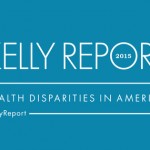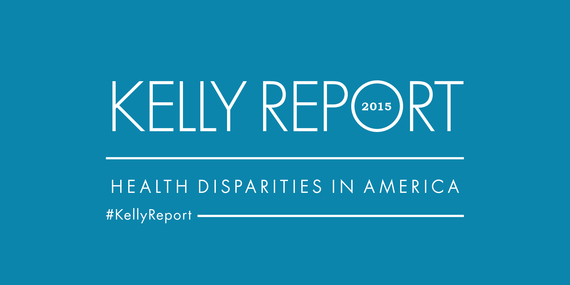
In January, when I assumed the post of chair of the Congressional Black Caucus Health Braintrust, I adopted the theme “The March Toward Health Equity,” as a nod to the 50th Anniversary of the Selma to Montgomery marches and to my belief that quality, affordable healthcare is a civil right that every American should enjoy. In my first year as CBC Health Braintrust Chair, I’ve traveled the nation, meeting with medical professionals, health policy experts and patients to get an honest, unvarnished look at health disparities and the toll they’ve taken on vulnerable populations – particularly in the African American community. The result of my year one examination, The 2015 Kelly Report on Health Disparities in America, …
In January, when I assumed the post of chair of the Congressional Black Caucus Health Braintrust, I adopted the theme “The March Toward Health Equity,” as a nod to the 50th Anniversary of the Selma to Montgomery marches and to my belief that quality, affordable healthcare is a civil right that every American should enjoy.
In my first year as CBC Health Braintrust Chair, I’ve traveled the nation, meeting with medical professionals, health policy experts and patients to get an honest, unvarnished look at health disparities and the toll they’ve taken on vulnerable populations – particularly in the African American community.
The result of my year one examination, The 2015 Kelly Report on Health Disparities in America, is a stark assessment of the impact of health inequity and the barrier it poses to socioeconomic progress for African Americans.
The report, which I released today, is a Congressional analysis of health inequity in America that brings together Members of Congress, medical professionals and public health thought leaders from across the country to examine the root causes and impacts of health disparities in America and provide a comprehensive set of legislative and policy recommendations to address them.
It’s a call-to-action for Congress to make improving health outcomes in diverse communities a national priority. A glimpse at some of the statistics from the Kelly Report underscores the urgency with which lawmakers need to act to save lives.
• African Americans die from all the top 10 causes of death — including cancer and heart disease — at a higher rate than any other racial or ethnic group in America,
• African Americans account for nearly half of new HIV infections and,
• African Americans have a 20% higher incidence rate and a 45% higher mortality rate from colorectal cancer than white Americans.
This is just a snapshot of the overall problem, but it couldn’t be more evident that America’s health strategy needs retooling.
That’s why the Kelly Report features a five-point plan to reduce health disparities in America. The plan focuses on five key avenues through which we can achieve health equity: Access, Workforce Diversity. Innovation & Research, Community Engagement and Federal Action on Healthcare. Allow me a moment to outline a few of the core recommendations proposed by the plan.
1) Access – Access to comprehensive, quality healthcare services is key to promoting health equity and putting a healthy life within reach for all. I propose that we achieve this goal through several initiatives, including fully implementing Medicaid expansion and setting up programs to encourage primary care providers to practice in underserved communities.
2) Workforce Diversity – Research shows that minority patients are more likely to adhere to the medical advice of culturally competent healthcare providers. To that end, increasing diversity in medicine is critical to closing the health disparities gap. To accomplish this, I propose supporting Science, Technology, Engineering and Mathematics (STEM) education in primary and secondary schools with diverse populations and creating and expanding training and mentoring programs to create a pipeline of diverse workers in the healthcare field.
3) Innovation & Research – We’ve only scratched the surface on the ability of technology to revolutionize the delivery of healthcare and the management of health conditions. As such, I propose that we increase investment in digital and biotechnology as well as increase availability, quality and utilization of data in health management in minority communities.
4) Community Engagement – Community health workers are the best advocates and grassroots evangelists we have in spreading the word to patients about the importance of taking control of their health outcomes. All across America, these community health heroes are on the front lines educating people on the importance of preventative healthcare and encouraging vital health screenings. We must do more to support these efforts to build healthy communities from the ground up.
5) Federal Action on Healthcare – The success of the four avenues I just outlined hinges on the will of Congress to act in the best interest of the health of all Americans. To do so, we must commit funding to public health initiatives that are proven to improve health outcomes in minority communities. I propose that we protect and improve Medicare and Medicaid (including adding dental and vision benefits for adults), passing mental health and substance abuse legislation, addressing gun violence as a public health epidemic and last, but certainly not least, upholding and improving the Affordable Care Act.
These five pillars of progress in minority health policy will close the health equity gap and ensure the basic human right of all Americans to a healthy life.
Your zip code, ethnicity and bank balance shouldn’t determine your health. The Kelly Report on Health Disparities in America puts us one step closer to balancing the scales and realizing the core mission of the CBC Health Braintrust: Achieving health equity in a generation.
— This feed and its contents are the property of The Huffington Post, and use is subject to our terms. It may be used for personal consumption, but may not be distributed on a website.
Read article here:


























